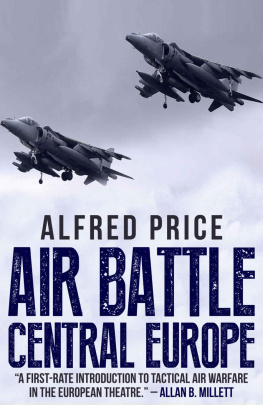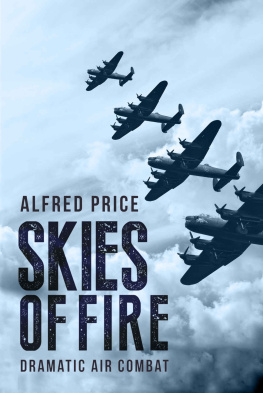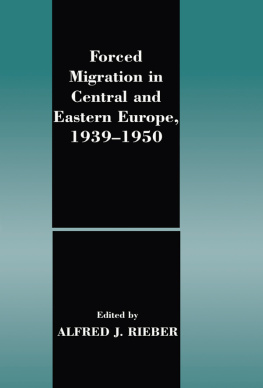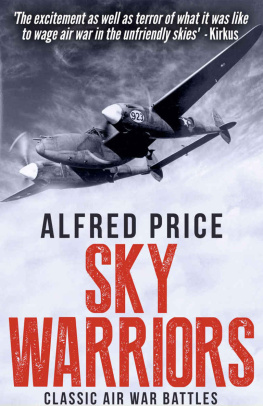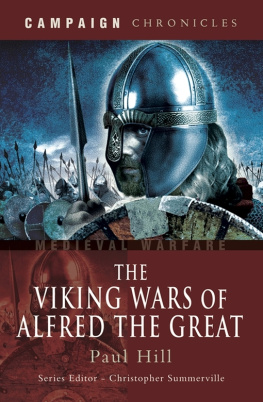Alfred Price - Air Battle Central Europe
Here you can read online Alfred Price - Air Battle Central Europe full text of the book (entire story) in english for free. Download pdf and epub, get meaning, cover and reviews about this ebook. year: 2015, publisher: Lume Books, genre: Non-fiction. Description of the work, (preface) as well as reviews are available. Best literature library LitArk.com created for fans of good reading and offers a wide selection of genres:
Romance novel
Science fiction
Adventure
Detective
Science
History
Home and family
Prose
Art
Politics
Computer
Non-fiction
Religion
Business
Children
Humor
Choose a favorite category and find really read worthwhile books. Enjoy immersion in the world of imagination, feel the emotions of the characters or learn something new for yourself, make an fascinating discovery.
- Book:Air Battle Central Europe
- Author:
- Publisher:Lume Books
- Genre:
- Year:2015
- Rating:4 / 5
- Favourites:Add to favourites
- Your mark:
- 80
- 1
- 2
- 3
- 4
- 5
Air Battle Central Europe: summary, description and annotation
We offer to read an annotation, description, summary or preface (depends on what the author of the book "Air Battle Central Europe" wrote himself). If you haven't found the necessary information about the book — write in the comments, we will try to find it.
Air Battle Central Europe — read online for free the complete book (whole text) full work
Below is the text of the book, divided by pages. System saving the place of the last page read, allows you to conveniently read the book "Air Battle Central Europe" online for free, without having to search again every time where you left off. Put a bookmark, and you can go to the page where you finished reading at any time.
Font size:
Interval:
Bookmark:
Air Battle Central Europe
Alfred Price
Alfred Price, 1986
Alfred Price has asserted his rights under the Copyright, Design and Patents Act, 1988, to be identified as the author of this work.
First published in 1990 by Warner Books.
This edition published in 2018 by Lume Books.
Air Power is a thunderbolt launched from an egg-shell invisibly tethered to a base.
HOFFMAN NICKERSON
Table of Contents
Preface
Numerous books have been published which purport to describe air power, but in many cases they are straight regurgitations of material from aircraft and weapon manufacturers brochures plus a sprinkling of jargon words and acronyms, which give little or no idea of where the various systems fit into the big picture.
Air Battle Central Europe is different. In this book I have described the most concentrated air action I can imagine: that over and around a full-scale land battle on the flatlands of northern Germany, during the non-nuclear phase of a major conflict between NATO and Warsaw Pact forces taking place between 1986 and 1990. I have avoided any attempt to describe events after the nuclear threshold has been crossed, because nuclear attacks on airfields would almost certainly bring most of the tactical air battle to an immediate end.
To assemble this account I interviewed several NATO officers, asking them to explain in non-technical language how they would direct the air forces under their command in time of war. The dictates of security did not allow the officers to tell all, but I believe that what they have said is accurate and their opinions are relevant opinions. Chapters based on fifteen of these interviews form the body of this book. These personal accounts tell the story in a way that is credible and understandable, and they show clearly how widely differing elements of air power come together to form a complex whole. The accounts also convey a spine-chilling vision of the horrors that would result from even a non-nuclear air war in Central Europe.
I am extremely grateful to the very busy men who kindly gave me their time and their views to make this book possible: Air Marshal Sir Patrick Hine; Air Vice Marshal Ken Hayr; Air Commodore Dick Johns; Colonel Keith Robson; Wing Commander Grant McLeod; Lieutenant-Colonels Tom Lyon, Carl Loveland, Les Kersey, David Vesely, Peter Granger, Paul Fazackerley and Wilfred Hyde-Smith; Oberstleutnant Walter Jertz, Fregattenkapitaen Volke Liche and Major Charles Casey. The account which follows depends heavily on the views of these interviewees, but I alone am responsible for those opinions not attributed to anyone else.
I am also grateful to the members of the various services public relations staffs and others who arranged the interviews. In particular I should like to acknowledge valuable assistance from the following: Air Commodore R. Robson, Director of Public Relations (RAF), and his deputy, Michael Pentreath, Peter Hicks at Headquarters RAF Germany, Captains Yaple and Fraize at Headquarters Third US Air Division, Captain Lamp at Upper Heyford, Jim Sherman at Headquarters US Air Forces Europe, Air Commodore C. Reineck at the British Embassy at Bonn, Oberst W. Geissinger at the German Embassy in London and Brigadier C. Jebens at Army Air Corps Headquarters at Netheravon. I am also grateful to Air Commodore Henry Probert and Marjorie Parks at the Air Historical Branch in London for their help and understanding.
February 1986 ALFRED PRICE,
Uppingham,
Rutland,
England
Authors Note
In this book distances are given in nautical miles; 1 nautical mile = 1.15 statute miles = 1.85 km. Aircraft speeds are given in knots; 1 knot = 1 nautical mile per hour. The speed of sound, Mach 1, is approximately 660 knots at sea level. Aircraft weights are quoted in long tons (2,240 lb = 1.018 tonnes).
At air displays it is fashionable to set around a combat aircraft every type of weapon it can possibly carry. And manufacturers publicity photographs often show aircraft carrying weapon loads far greater than they could possibly carry any useful distance in time of war. Where aircraft bomb loads are discussed or depicted in this book, they are in each case representative war loads that would be carried in action by the type of aircraft described.
Prologue
Communiqu No.1
Headquarters 2nd Allied Tactical Air Force
2300 hours GMT
AIR SUPPORT LAND BATTLE IN NORTHERN GERMANY
No Use of Nuclear Weapons by Either Side
Shortly before 0400 hours GMT this morning Warsaw Pact forces crossed the inner German border in force at several points and advanced into the area defended by the Northern Army Group. The main lines of advance are to the north and south of Brunswick, and to the north of Kassel. Simultaneously waves of enemy aircraft, some with fighter escorts, fanned out over West Germany and attacked targets there and in Holland and Belgium with high-explosive and chemical weapons. Surface-to-surface missiles with chemical warheads were launched at other targets. There are no reports of nuclear weapons having been used. The attacks caused widespread damage and casualties. Several of the enemy formations were intercepted by F-4, F-15 and F-16 fighters of the US, British, German, Dutch and Belgian Air Forces, in many cases directed by Airborne Warning and Control System (AWACS) aircraft. The enemy air attacks continued throughout the period under review and there were numerous air combats.
Up to 2200 hours GMT, 2 ATAF fighters operating in the defensive role had destroyed 281 aircraft and probably destroyed 35 others, and forced many to jettison their loads clear of targets; surface-to-air missile batteries were also in action and shot down 162 enemy aircraft and probably destroyed 22 more.
Before dawn 2 ATAF fighters, F-15s of the US Air Force and F-4s of the German Air Force, provided cover for German Navy Tornadoes which attacked a concentration of enemy shipping near the island of Rgen in the Baltic. The fighters broke up attempts by enemy aircraft to interfere with the attack, and destroyed 12 and probably destroyed 5 more. The attack on the ships was successful and there were a number of hits with air-to-surface missiles; at least three ships are stopped dead in the water, others were sunk and the remainder withdrew to the east. It is believed that an attempt has been frustrated to launch an amphibious landing operation on NATO territory.
At first light the enemy launched a large-scale helicopter assault operation to seize bridges over the Weser river, south of Bremen. While F-16s of the Dutch and Belgian Air Forces held off the enemy fighter escort, German Air Force Alphajets made repeated attacks on the transport helicopters and destroyed 41 and probably destroyed 6 more. Severe casualties were caused among troops on board the helicopters. During air combats in the area 6 enemy fixed-winged aircraft were destroyed and another 2 probably destroyed. Later in the morning 2 ATAF fighters mounted a covering operation while Allied transport helicopters flew troops into positions to seal off the pocket.
Good weather over the combat area until late in the afternoon assisted 2 ATAF to mount an effective programme of attacks aimed at slowing the enemy thrusts, giving time for Allied ground forces to move into blocking positions. From first light relays of US Air Force A-10 aircraft flew attack missions against advancing enemy troops on all three lines of thrust, in some cases against armoured units whose leading elements were in contact with Allied ground forces. The A-10s destroyed 1,035 tanks and armoured vehicles, plus 4 aircraft and helicopters which they encountered during their operations. In several cases American, British and German Army anti-tank helicopter units launched attacks co-ordinated with those of the A-10s. By the late afternoon low cloud drifting in from the west, combined with the pall of smoke and dust from the many fires and explosions, forced an end to close support operations by fixed-winged aircraft against the enemy armoured thrusts. But by then strong Allied troop reinforcements were in position to block the enemy advances.
Next pageFont size:
Interval:
Bookmark:
Similar books «Air Battle Central Europe»
Look at similar books to Air Battle Central Europe. We have selected literature similar in name and meaning in the hope of providing readers with more options to find new, interesting, not yet read works.
Discussion, reviews of the book Air Battle Central Europe and just readers' own opinions. Leave your comments, write what you think about the work, its meaning or the main characters. Specify what exactly you liked and what you didn't like, and why you think so.

